I. Introduction
Since the launch of OpenAI GPT and Google Bard, everyone has been curious about artificial intelligence (AI) and Chatbots, in particular. How to train a chatbot? But what is a chatbot? A chatbot tries to automate tasks and give users a more personalized experience by simulating human conversation through text or voice. Chatbots use artificial intelligence technologies like natural language processing (NLP), machine learning (ML), and others to understand user questions and answer them in the right way.
Importance of chatbots
It’s no secret that chatbots have become more prevalent in the modern world. This is because they can make it easier for customers, employees, and brands to talk to each other and increase user engagement and satisfaction. Oracle thinks the global chatbots market will grow from $3.5 billion in 2019 to $9.4 billion in 2024, a CAGR (compound annual growth rate) of 29.7%.
This article aims to give readers a high-level understanding of chatbots by covering how they learn, how long it takes to train them, the techniques and algorithms used, the programming languages and APIs used, and the various types of chatbots available. Also covered are the artificial intelligence (AI) technologies behind chatbots, their most advanced versions, and how to make your own.
II. How does a chatbot learn on its own?
A. Machine learning in chatbots
The goal of machine learning, a branch of artificial intelligence, aims to teach a computer to learn from data and improve over time. When machine learning algorithms are used in chatbots, the chatbot can be taught to look for patterns in what users say and respond accordingly.
B. How chatbots learn on their own
Chatbots use machine learning methods like reinforcement and supervised and unsupervised learning to improve their performance in analyzing user input and responses. For example, chatbots that have gone through supervised learning can sort user input into different groups and respond to them accordingly. On the other hand, those that have been through reinforcement learning can change their responses based on what users tell them. Unsupervised learning is another way chatbots get better at responding to individual users. They do this by sifting through large datasets to find relevant patterns.
III. How long does it take to train a chatbot?
A. Factors that affect the training time
Different variables, such as chatbot complexity, the availability and quality of training data, the programming language, and the machine learning techniques used, affect how long it takes to train a chatbot. A rule-based chatbot, for instance, might only need a few days of training time, while a machine-learning chatbot might need months or even years.
B. Duration for training a chatbot
It takes about three to six months to teach a chatbot using machine learning. This timeframe, however, is highly variable, depending on factors such as the chatbot’s complexity and the quantity and quality of the data at hand. Gartner suggests that two years of constant training is necessary for a chatbot to reach its full potential.
IV. Do chatbots use machine learning?
A. Machine learning to train chatbot
Chatbots use machine learning to get smarter over time and learn new skills from interacting with humans. Chatbots can get more intelligent and valuable over time by looking at and learning from a lot of data about how people use them. This is made possible by machine learning algorithms.
B. Advantages of machine learning in chatbots
Using machine learning in chatbots can improve the bot’s accuracy and usefulness, reduce the need for human help, and give the user a better experience. Chatbots can better meet the needs of their users and adapt to their preferences as they learn from their interactions with them over time. Machine learning allows chatbots to do complicated tasks independently, making business processes like customer service and lead generation more efficient.
V. Which technique is used to train chatbot?
A. Chatbot techniques
Chatbots can be either rule-based or based on machine learning. Rule-based chatbots use decision trees and other pre-programmed rules to figure out how to answer questions. On the other hand, machine learning chatbots utilize AI and NLP to decipher user inputs and develop appropriate responses.
B. Comparison of rule-based and machine learning-based chatbots
While rule-based chatbots are simple to create, they lack flexibility and necessitate extensive programming to accommodate different user inputs. However, chatbots powered by machine learning are more advanced because they can improve over time by learning from users’ input.
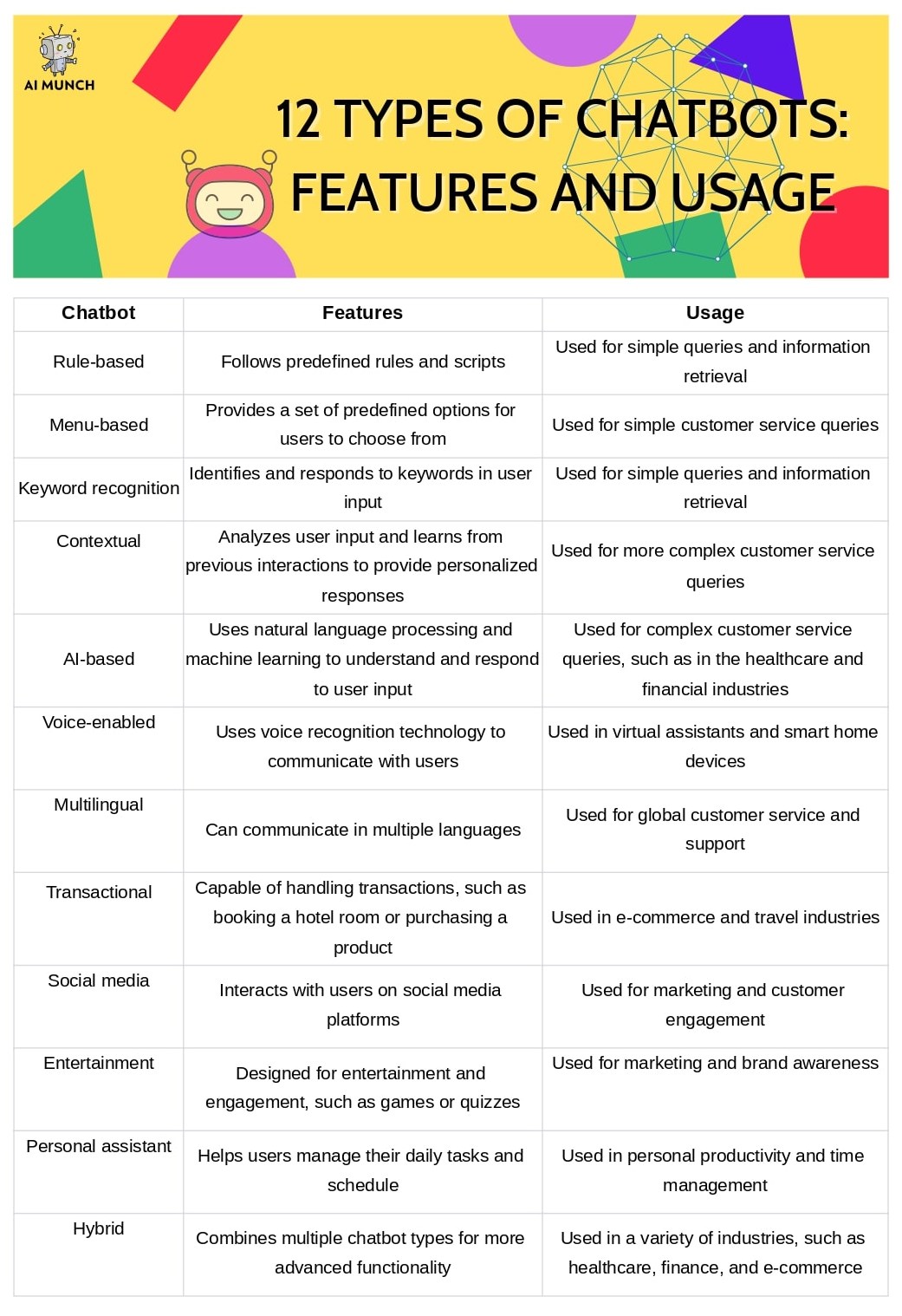
VI. Which language is best to train chatbot?
A. Comparison of programming languages
Python, Java, JavaScript, and C++ are just some of the languages that can be used to create chatbots. Most chatbots are written in Python, Java, or JavaScript, but Python is the most common.
B. Factors to consider when choosing language
When deciding which programming language to train a chatbot in, it is crucial to consider the developer’s skills, the chatbot’s complexity, and how it will be used. Python is popular for building chatbots because it is easy to use, simple, and flexible (NLTK) and has many AI and NLP libraries like TensorFlow and Natural Language Toolkit.
VII. Which API is used to build chatbots?
A. APIs for chatbot development
Some application programming interfaces (APIs) that can be used to make chatbots are Microsoft’s Bot Framework, IBM Watson, and Google Dialogflow. These application programming interfaces (APIs) give chatbots tools and parts that are already made to connect to messaging platforms and web services.
B. Comparison of popular chatbot APIs
The Microsoft Bot Framework is famous for building chatbots because it has many tools and works with different messaging platforms like Facebook Messenger and Slack. IBM Watson’s sophisticated AI and NLP features are compatible with several well-liked messaging apps like Slack and Facebook Messenger. Google Dialogflow is a cloud-based platform for making chatbots that work with popular messaging apps like Facebook Messenger and Google Assistant and has an easy-to-use interface.
VIII. Which algorithm is best for to train a chatbot?
A. Popular algorithms for chatbots
Chatbots are made with different algorithms, such as decision trees, support vector machines, and neural networks. Rule-based chatbots use decision trees because they’re simple to create but have rigid functionality. Chatbots trained with support vector machines rely on machine learning to process various input data, but they need much data to learn from. Chatbots based on machine learning and using neural networks can learn complex patterns and relationships in data.
B. Comparison of popular chatbot algorithms
Chatbots that need high accuracy and complexity should use neural networks because they are the most sophisticated and capable of handling complex data. They are harder to make because they need a lot of computing power and training data.
IX. What are the 4 types of chatbots?
A. Top 4 types of chatbots
The main four types of chatbots are rule-based chatbots, FAQ chatbots, AI chatbots, and voice-enabled chatbots. Rule-based chatbots use pre-programmed rules to generate responses to user inputs. FAQ chatbots provide answers to frequently asked questions. AI chatbots use machine learning and NLP to understand and interpret user inputs and generate relevant responses. Voice-enabled chatbots use speech recognition technology to understand and interpret voice inputs.
B. Characteristics of each type
Rule-based chatbots are relatively simple and can handle straightforward queries, while FAQ chatbots are designed to provide quick answers to common questions. AI chatbots are more sophisticated and can understand and interpret complex user inputs. Voice-enabled chatbots are becoming increasingly popular and provide a more natural and intuitive user interface.
X. Which AI used for chatbots?
A. AI technologies for chatbots
Natural language processing (NLP), machine learning (ML), and deep learning are just a few examples of the many artificial intelligence (AI) technologies put to use in chatbot creation (DL). Natural language processing (NLP) decodes user input and returns valid results. Through the use of ML, chatbots can be taught to identify and appropriately respond to a variety of user inputs. Deep learning is used to create chatbots with greater intelligence and flexibility.
B. Comparison of popular AI technologies for chatbots
Natural language processing (NLP) is the artificial intelligence (AI) technology most often used to build chatbots. Machine learning is also used in the chatbot industry to teach bots what different inputs mean and how to respond to them. Digital learning (DL) is a more advanced technology used to make chatbots that can learn and change over time, so they can respond to user inputs more accurately and in a way that makes sense.
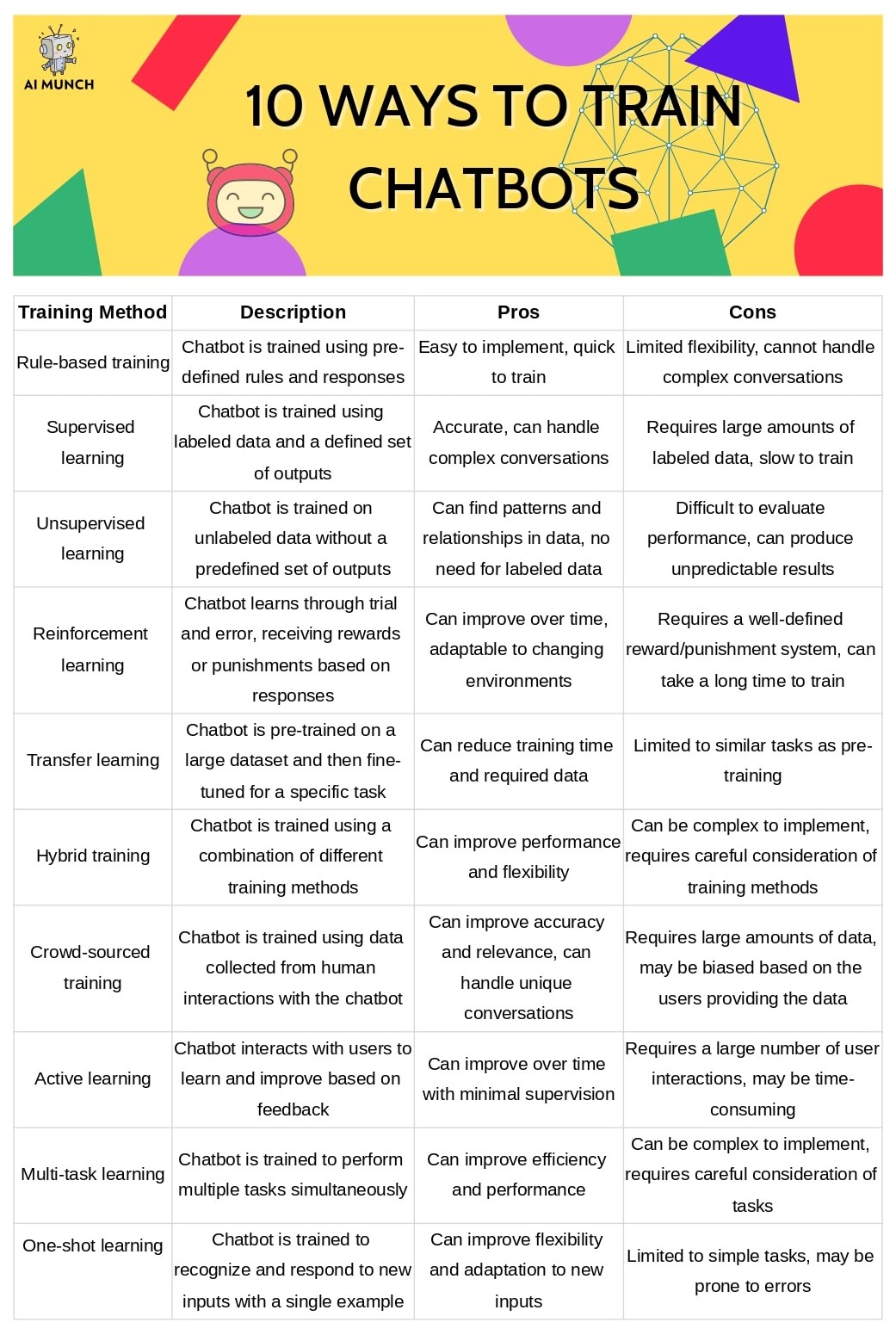
XI. Is Siri an AI chatbot?
Siri is a chatbot with artificial intelligence because it uses natural language processing and machine learning to determine what people want and give the correct answers. Siri is a voice-enabled chatbot that is built into Apple’s iOS. It lets users do things with their devices by talking to them.
Comparison of Siri with other chatbots
Siri has one of the largest user bases among chatbots, with over 500 million worldwide interacting with the service. Siri can process many commands and is constantly being refined through user feedback. Siri may be less adaptable and user-friendly than other chatbots, and it’s only available on Apple devices.
XII. What is the most intelligent chatbot?
Intelligent chatbots are those that can process and respond to nuanced user queries. Chatbots like Google Assistant, Alexa, and Cortana from Microsoft and Amazon are among the most advanced available.
Comparison of the most intelligent chatbots
The natural language processing and question-answering skills set Google Assistant apart from the competition. Amazon Alexa is known for being able to control smart home devices and having many third-party integrations. Microsoft’s virtual assistant Cortana is known for its ability to understand natural language and work well with other Microsoft software. Moreover, we have already compared OpenAI ChatGPT with other chatbots.
XIII. How to build a chatbot?
Steps for building a chatbot include:
- Identifying the purpose and target audience.
- Defining the chatbot’s personality and conversational flow.
- Choosing a programming language and framework.
- Training the chatbot with data and machine learning algorithms and testing and refining the chatbot over time.
Many tools and resources are available for chatbot development, including chatbot development frameworks like Dialogflow and Botpress, machine learning platforms like TensorFlow and Keras, and chatbot development services like IBM Watson and Amazon Lex. Many of these tools offer pre-built chatbot templates and integrations with popular messaging platforms like Facebook Messenger and WhatsApp. Additionally, many online tutorials, courses, and forums are available to help developers learn and improve their chatbot development skills.
XIV. Which Neural network is best for Chatbot?
Neural networks are vital to making chatbots, especially ones that learn independently. Various neural networks can be used to create chatbots, each with advantages and disadvantages.
The Recurrent Neural Network (RNN) is a common choice for chatbots. Chatbots that need to understand and respond to natural language inputs must be able to process data sequentially, and RNNs do just that. Their ability to send information from one time step to the next keeps a conversation’s meaning in mind.
Besides recurrent neural networks, Convolutional neural networks (CNN) are widely used in chatbots. CNNs are great at recognizing images and videos, but they can also be used to pull features from text data that can be used in chatbots. It does what it’s supposed to do by filtering the data that comes in to find the crucial parts that can be used for further processing (like classification or prediction).
As a last option, we have neural networks based on transformers. These networks have recently become famous for making chatbots. Transformers excel at natural language processing tasks because they are tailored to deal with sequential data. They function by allowing each word in a sequence to pay attention to every other word. This allows for the capture of long-range dependencies.
To train a chatbot, we need to choose the best option. The best neural network for a chatbot will ultimately depend on the project’s requirements.
XV. Are all chatbots based on AI?
When it comes to train a chatbot, AI helps. However, to be clear, not all chatbots use AI. You can categorise chatbots as either rule-based or machine learning-based.
The responses and rules of operation for rule-based chatbots are predetermined. They decode user input via keyword recognition and pattern matching and respond appropriately. The ability to handle complex, open-ended conversations is limited, but they can help handle simple tasks and frequently asked questions.
On the other hand, chatbots that use machine learning are made with artificial intelligence, which lets them learn and improve over time. These chatbots’ responses are based on algorithms and models that analyse user input in natural language and generate suitable replies. They are flexible and can handle a wider variety of topics in conversation.
XVI. Is Chatbot machine learning or NLP?
Conversational interfaces can incorporate NLP and machine learning (NLP). Natural Language Processing (NLP) is a branch of AI that studies how to teach computers to read, comprehend, and communicate in human language. It uses various methods to analyse and comprehend incoming natural languages data, such as text analysis, part-of-speech tagging, and sentiment analysis.
However, machine learning is a more general term referring to various artificial intelligence (AI) methods, not just natural language processing. Chatbots powered by machine learning analyse user input in real-time and then respond appropriately using learned patterns in the data.
In conclusion, natural language processing (NLP) is integral to chatbots trained with machine learning. Still, machine learning is a lot more than just natural language processing.
XVII. Conclusion
Lastly, chatbots have proven to be an essential tool for businesses that want to improve how quickly they respond to customers and how well they serve them. Chatbots have evolved alongside AI advancements, becoming brighter and better able to learn from and respond to user queries. To get better results, we need to train a chatbot properly.
This article has covered a lot of ground regarding chatbots, including how they learn on their own, how long it takes to train a chatbot, the methods employed, and the top languages, APIs, algorithms, and AI technologies that are used in their creation. We’ve examined how chatbot work, what makes the most intelligent ones tick, and what tools and resources are required to create one.
Just like artificial intelligence is helping us in education, digital currency trading, crypto mining, and security, this will provide more help to train a chatbot. Chatbots are expected to become even smarter in the future as technologies like natural language processing, machine learning, and voice recognition are added. This will strengthen their position in customer service by allowing them to provide a more customised and humanlike experience for users.
In conclusion, chatbot applications are essentially endless, and businesses would do well to investigate how they might be used to serve customers better and increase profits.
FAQs
How to train a chatbot, and what are the types:
Rule-based chatbots, FAQ chatbots, AI-powered chatbots, and hybrid chatbots are just some of the varieties. When a user types in a question, a rule-based chatbot will respond with a predetermined answer, while an FAQ chatbot will give a standard answer. AI-powered chatbots only use machine learning and natural language processing (NLP) to understand and answer user questions, while rule-based chatbots also use AI.
Yes, there are chatbots that use GPT-3, which is a state-of-the-art language model developed by OpenAI. GPT-3 can be used to create chatbots that are capable of carrying on natural and engaging conversations with users.
Rule-based chatbots and those powered by artificial intelligence are the two most common. AI-powered chatbots use machine learning and natural language processing to understand and respond to user queries, while rule-based chatbots rely on pre-defined rules.
Created by OpenAI’s GPT language model, ChatGPT is a conversational AI. But the GPT-3 model, which is the third generation of the GPT, has been shown to produce more human-like and realistic responses than its predecessors.
OpenAI’s GPT-3 and Google’s BERT are both cutting-edge language models. When comparing GPT-3 to BERT, it has been shown that GPT-3 does better at a wider range of natural language processing tasks. These tasks include language translation and text completion.
While GPT-3 is one of the most sophisticated language models available today, it’s worth noting that other forms of artificial intelligence (AI) may be more sophisticated in some contexts. Deep learning models like convolutional neural networks (CNNs), used in computer vision, are some of the most advanced AI models.
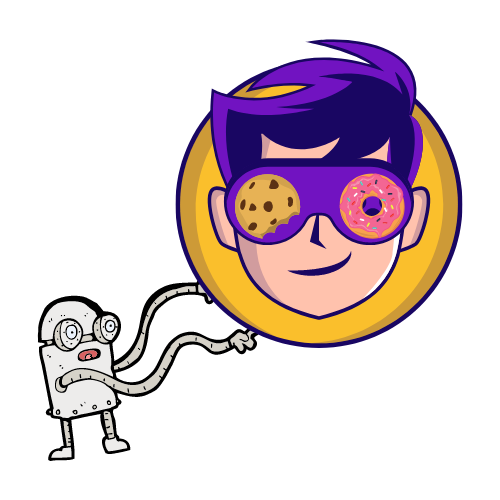


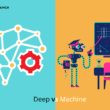
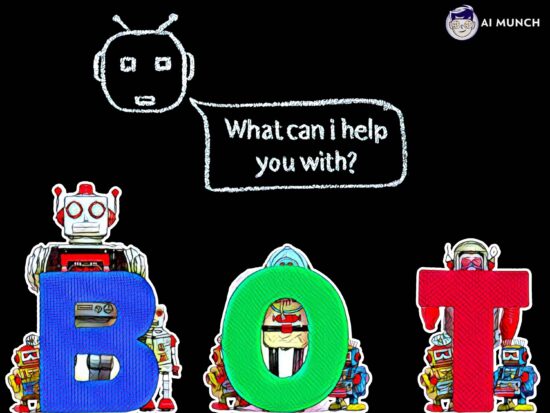
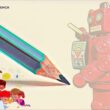

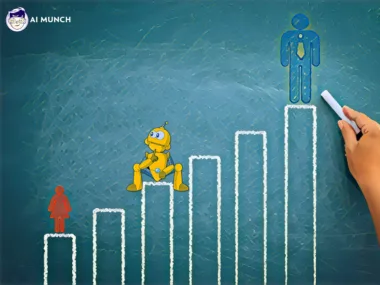
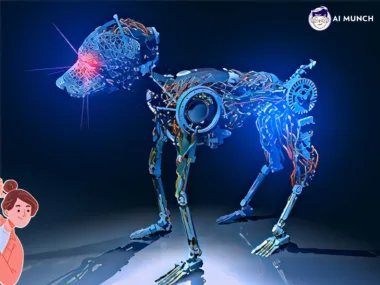


17 comments